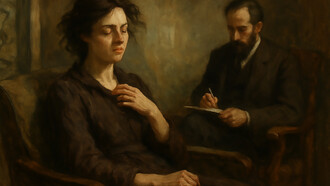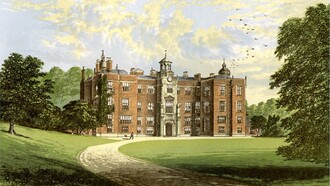For those interested in the relationship between Judaism and Christianity, Rome is where visitors will discover that Jews lived there long before there were Christians, at least by the second century B.C.E.
Rome is where the Catholic Church first enforced rules restricting Jewish activity and Christian interaction with Jews—rules observed by Church and State alike and lasting a little over three hundred years into the modern era of Italian unification.
In 1555, Pope Paul IV decreed that all Jews in the Papal States must be segregated into enclosed neighborhoods ( quarters). The term first used by Roman Jews to refer to these quarters was "serraglio." It has been suggested that the word ghetto appeared for the first time in an official document drawn up by a Jewish notary in Rome, wherein he referred to the area as “il nostro ghet” (our ghetto) in 1589.
There is still much debate today among historians, linguists, and rabbis regarding exactly how the word evolved from geto to ghetto because it appears in documents throughout the 16th century in a variety of forms: ghet, ghetto, geto, getto, and gette. As to why Roman Jews used the term ghetto, many scholars point to its similarity to the Hebrew word get, meaning divorce, which, in the thinking of the Jews of the time, may have represented their separation from the Catholics in Rome.
Although the Roman ghetto was restrictive, it was designed to separate Jews from Christians. It was believed that the ghetto would encourage Jews to convert to Christianity. However, on the contrary, Jewish culture thrived. The Catholic Church’s rules for separating one part of society from another failed.
Italian culture—a culture interweaving both Judaism and Christianity—flourished.
Direct from the Jewish Museum of Rome, Micaela Pavoncello, a native Italian Jewish art historian and licensed tour guide of Rome, has been educating international tourists and students for the past two decades about the history of her people—the Jews of Rome.
Pavoncello proudly avows that her "family tradition has it that their ancestors (on her father's side) came to Rome at the time of the Maccabi Revolt," before the destruction of the Temple of Jerusalem (70 CE).
In a city with numerous options for a guided tour of the Jewish Quarter, Pavoncello offers nothing short of an extraordinarily authentic and unforgettable experience for both Jewish and non Jewish tourists from all backgrounds.
Pavoncello is the founder and owner of Jewish Roma Walking Tours, providing venues to visit, on foot, sites pivotal to Jewish history in Rome.
Participants on her tours will learn about the darkest and most painful day of Roman Judaism—October 16th, 1943. She shares personal family stories about anti-Semitism and the devastating occasion when the Nazis deported her great-grandmother, Emma Di Porto.
Pavoncello shows a short video narrating a momentous day of emotion for the entire Pavoncello family, when the great-grandchildren of Nonna Emma Di Porto Pavoncello all gathered in the Garbatella district in Rome for the laying of the Stolperstein stumbling block in her memory. Never forget!
She recounts the incredible story of three courageous doctors working in a hospital in Rome during World War II. Fatebenefratelli Hospital, directly across the Tiber River from Rome's Jewish ghetto, became a refuge for Jews. Pavoncello narrates an insider's perspective from her own research. The hospital's doctors factiously invented a highly contagious and deadly disease they called "Syndrome K." They isolated entire Jewish families in the "Syndrome K" ward, keeping at bay the Nazi SS, who were afraid to enter. The "Syndrome K" ruse saved countless Jews in Rome—until June 4th, 1944, when U.S. forces led by General Mark Clark liberated Rome.
Pavoncello also shares what she remembers from the terrorist attack on the Great Synagogue of Rome, which occurred on October 9th, 1982. Likewise, she narrates what she remembers from Pope John Paul II’s visit in 1986 and Pope Benedict XVI's visit in 2010, including her story about briefly meeting Pope Francis in 2016.















